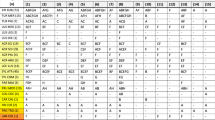Abstract
In addition to guanine, xanthine and hypoxanthine were identified in white spherules in excreta of five species ofArgas andOrnithodoros ticks by a reverse-phase high-performance liquid chromatography (HPLC) and a gas chromatographic method with mass spectrometric detection, (GC/MS). The mutual relationships of these purines in excreta ofArgas (Persicargas) persicus were found to be less than 1.5% for hypoxanthine, less than 9.0% for xanthine and 89.8–98.6%, for guanine. In excreta of other species, the relationships of purines were similar, with the exception ofArgas (A.) reflexus andA. (A.) polonicus, where the amount of hypoxanthine was rather elevated. Uric acid was also identified in some cases. The assembly efficacy of xanthine and hypoxanthine is similar to that of guanine, but xanthine significantly enhances the assembly efficacy of commercial guanine when mixed in ratio of about 1∶25. Thus, xanthine seems to be the second important component of assembly pheromone of argasid ticks.
Similar content being viewed by others
References
Dusbábek, F., 1985. Pheromonal communication of homogamic and heterogamic populations ofArgas (Persicargas) persicus (Acarina: Argasidae). Věst. Česk. Spol. Zool., 49: 244–252.
Gothe, R., 1987. Tick pheromones. Onderstepoort J. Vet. Res., 54: 439–442.
Gothe, R. and Kraiss, A., 1982. Localization of pheromone emission and perception inArgas (Persicargas) walkerae Kaiser and Hoogstraal, 1969. Zentralbl. Veterinärmed., Reihe B, 29: 573–582.
Gothe, R., Weck, P. and Kraiss, A., 1984. Zur pheromonal induzierten Kommunikation vonArgas (Persicargas) walkerae und biologisch-chemischen Bekämpfung durch kombinierten Einsatz eines Pheromones und Pheromon-Analogous mit Flumethrin. Zentralbl. Veterinärmed., Reihe B., 31: 161–179.
Hamdy, B.H., 1972. Biochemical and physiological studies of certain ticks (Ixodoidea). Nitrogenous excretory products ofArgas (Persicargas) arboreus Kaiser, Hoogstraal, and Kohls and other argasid and ixodid species. J. Med. Entomol., 9: 346–350.
Hamdy, B.H., 1973a. Biochemical and physiological studies of certain ticks (Ixodoidea). Cycle of nitrogenous excretion inArgas (Persicargas) arboreus Kaiser Hoogstraal, and Kohls (Argasidae). J. Med. Entomol., 10: 53–57.
Hamdy, B.H., 1973b. Biochemical and physiological studies of certain ticks (Ixodoidea). Cycle of nitrogenous excretion ofHyalomma dromedarii Koch (Ixodidae). J. Med. Entomol., 10: 345–348.
Hamdy, B.H. and Sidrak, W., 1982. Guanine, biosynthesis in the ticks (Acari)Dermacentor andersoni (Ixodidae) andArgas (Persicargas) arboreus (Argasidae). Fate of labelled guanine precursors. J. Med. Entomol. 19: 569–572.
Hassanali, A., Nyandat, E., Obenchain, F.A., Otieno, D.A. and Galun, R., 1989. Humidity effects on response ofArgas persicus (Oken) to guanine, an assembly pheromone of ticks. J. Chem. Ecol., 15: 791–797.
Hunter, G., 1936. On the hydrolysis of guanine. Biochem. J., 30: 1183–1188.
Jegorov, A., Šimek, P., Tříska, J. and Dusbábek, F., 1991. Determination of purine and pyrimidine bases and nucleosides in excreta of arthropods by conventional and microbore high performance liquid chromatography and gas chromatography with mass spectrometric detector. J. Chromatogr. (in press).
Kland, M.J. and Johnson, L.A., 1957. A kinetic study of the ultraviolet decomposition of biochemical derivatives of nucleic acid. I. Purines. J. Am. Chem. Soc., 79: 6187–6192.
Kraiss, A., Neitz, A.W.H. and Gothe, R., 1984. The functional significance ofArgas (Persicargas) walkerae pheromones and guanine as information carriers. Zentralbl. Bakteriol. Hyg., Ser. A, 1258: 411–412.
Leahy, M.G., Vandehey, R. and Galun, R., 1973. Assembly pheromone(s) in the soft tickArgas persicus (Oken). Nature, 246: 515–517.
Leahy, M.G., Karuhize, G., Mango, C. and Galun, R., 1975a. An assembly pheromone and its perception in the tickOrnithodoros moubata (Murray) (Acari: Argasidae). J. Med. Entomol., 12: 284–287.
Leahy, M.G., Sternberg, S., Mango, C. and Galun, R., 1975b. Lack of specificity in assembly pheromone of soft ticks (Acari: Argasidae). J. Med. Entomol., 12: 413–414.
Likeš, J. and Laga, J., 1978. Basic Statistical Tables, SNTL, Praha, 488 pp. (In Czech).
Neitz, A.W.H. and Gothe, R., 1984. Investigation into the volatility of female pheromones and the aggregation-inducing property of guanine inArgas (Persicargas) walkerae. Onderstepoort J. Vet. Res., 51: 197–201.
Otieno, D.A., Hassanali, A., Obenchain, F.D., Sternberg, A. and Galun, R., 1985. Identification of guanine as an assembly pheromone of ticks. Insect. Sci. Appl., 6: 667–670.
Sonenshine, D.E., 1985. Pheromones and other semiochemicals of the Acari. Annu. Rev. Entomol., 30: 1–28.
Sonenshine, D.E., 1986. Tick pheromones: an overview. In: J.R. Sauer and J.A. Hair (Editors), Morphology, Physiology, and Behavioural Biology of Ticks. Ellis Horwood, Chichester, UK, pp. 342–360.
Sonenshine, D.E., Silverstein, R.M. and Rechav, Y., 1982. Tick pheromone mechanisms. In: F.D. Obenchain and R. Galun (Editors), Physiology of Ticks. Pergamon Press, Oxford, pp. 439–468.
Tatchell, R., 1964. Digestion in the tickArgas persicus Oken. Parasitology, 54: 423–440.
Author information
Authors and Affiliations
Rights and permissions
About this article
Cite this article
Dusbábek, F., Šimek, P., Jegorov, A. et al. Identification of xanthine and hypoxanthine as components of assembly pheromone in excreta of argasid ticks. Exp Appl Acarol 11, 307–316 (1991). https://doi.org/10.1007/BF01202877
Accepted:
Issue Date:
DOI: https://doi.org/10.1007/BF01202877




